Native American History
In the late 18th and early 19th centuries the Takelma resided in the Union Rogue River Camp area. Their daily lives centered around the seasonal availability of the natural resources in the middle and upper reaches of the Rogue River. They maintained their winter villages in the lower elevations near the reliable fishing and flood plains where modern-day Medford is located. During the summer months they would move to seasonal base camps to hunt deer, elk, rabbits and squirrels. They would also collect acorns, root crops, camas, huckleberries, and other vegetables to supplement their diets.
Settlers
The 1st documented visits from white men was in 1825. The French fur traders would call the Takelma Les Coquins’ (The Rogues) and referred to the region they lived in as La Riviere aux Coquins (The River of the Rogues). Two major developments in the early 1800’s started the immigration of settlers in the area: The Donation Land Act (1850) and the discovery of GOLD!!! in along the banks of the Rogue River in 1851.
Gold Rush
In the height of the Southern Oregon gold rush over $70 million in gold was taken from the Rogue River Area. Today many visitors to the area enjoy trying their hand at panning for gold. (Follow this link to find instructions on How-To Pan for Gold). Gradually, however, the gold diminished and is now a recreational activity.
Pre-Depression
In the late 1880’s, Crater Lake had become a popular destination. At the time it took two full days by wagon to reach it from Medford. Many would stay at the Boothby House (what is now the Prospect Hotel listed on the National Register of Historic Places). It became a local favorite and would host community events, parties, and dances. On May 22, 1902, President Theodore Roosevelt signed the bill giving Crater Lake national park status. Crater Lake Lodge was opened in 1915 and the Rim Drive was completed in 1918. Many of the United States’ most prominent citizens have stayed at the Prospect Hotel, including William Jennings Bryan, Zane Grey, John Muir, Jack London, Gifford Pinchot, President Theodore Roosevelt and President Herbert Hoover.
The Great Depression Era
During the 1930’s, the Civilian Conservation Corps (CCC) built many of the rustic structures at the Union Creek Wayside and Union Creek Historic District (also listed on the National Register of Historic Places). It provided a wayside for travelers that included a picnic area and amphitheater. The resort, lodge, cabins, store, and cafe are still open today and provides visitors with travel information, historic interpretive center, permits, groceries and local area activities.
Hollywood
The wild and scenic Rogue River has long been a hidden treasure. In the late 1930’s the Rogue River became a favorite retreat for Hollywood star’s such as: Clark Gable, Ginger Rogers, Zane Grey, and Herbert Hover. Many Hollywood productions have been filmed using the Rogue River as a backdrop. Today, there are a few names like, Kristie Alley and Ginger Rogers that call the Rogue River Valley their home away from home.
1983 – Present
A group of Missionary Baptist Churches, located in Oregon and Washington, purchased the Union Rogue River Camp facilities and invite you to stay at our hidden treasure. As you can read there are many reasons to explore the Upper Rogue River, Crater Lake National Park, and the surrounding historic hot-spots.
